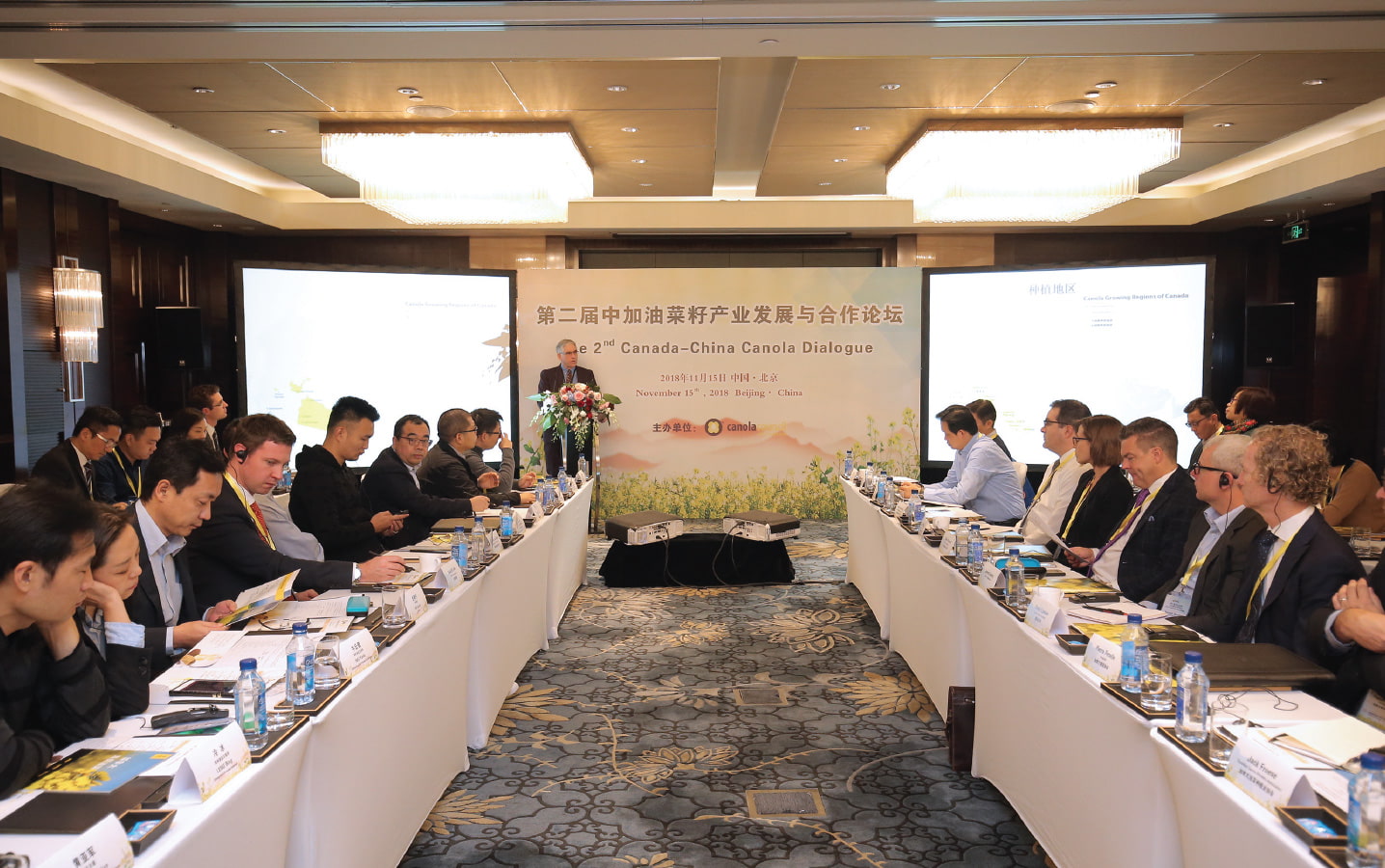Canada and China set goal to double ag trade by 2025
Canadian canola will benefit if Canada and China achieve a goal to double agricultural trade between them by 2025. The goal was set at the Canada-China Economic and Financial Strategic Dialogue between governments in Beijing in November 2018 – one of a number of activities that brought positive news for canola.
Jim Everson, president of the Canola Council of Canada (CCC), says the overall Canada-China trade goal aligns with the Canadian canola industry’s goal of 26 million tonnes of canola production and demand by 2025. Achieving that goal will require about a 25 per cent increase in Canadian production and exports from the current three-year average. China, which is already Canada’s largest canola seed customer, will continue to be an important growth market, Everson says.
November also marked the second annual Canola Dialogue that brought together industry and government from both Canada and China. Organized by the CCC, the event included representation from all segments of the canola value chain and helped to create conversation on how to make canola trade more stable and predictable.
Speaking after the November meetings with China, Everson said: “Doubling exports means that we will need to address barriers to trade and turn commitments into outcomes.”
One area Everson was referring to was the approval of three canola traits in particular – a Liberty-tolerance trait from BASF, Bayer’s TruFlex and Corteva’s Optimum GLY. The traits were developed using biotechnology and, though approved in Canada since 2012, were still not approved in China as of November 2018. Without approval in major markets, the traits had not been commercialized in Canada.
Just two months later, on January 8, China approved two of the traits – the Liberty-tolerance trait and the TruFlex trait. This allows for commercial launch of the traits in Canada, an important step to improve Canada’s canola productivity and meet export targets.
Everson called it a great day for canola innovation. “These traits will make Canada’s canola crop more resilient in the face of weed, disease and weather stresses. Not only will we be able to produce more canola to meet growing world demand, we’ll also be able to do it sustainably, using the same land base,” Everson says.
Once these two traits and Corteva’s Optimum GLY are fully commercialized, the industry expects growers will produce 800,000 tonnes more canola, worth approximately $400 million, every year using the same amount of land – a step-change for canola productivity.
Everson adds: “It’s encouraging to see government engagement result in action.”
He says official dialogues with China, the memorandum of understand (MOU) on blackleg and the approval of traits are all part of the effort to match growing Chinese demand with increased Canadian productivity. Canada’s canola sector will continue to work with China to improve trade predictability, an important step in achieving the goal to double agriculture trade between the two countries by 2025.





